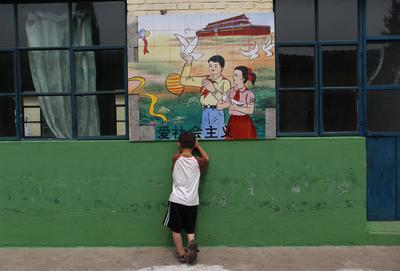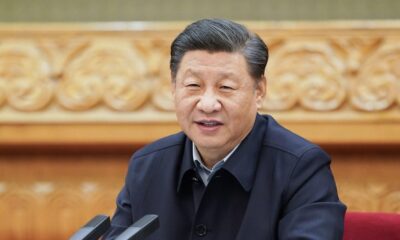Asean
Realising China’s urbanisation dream

Author: Wang Xiaolu, NERI
China is experiencing rapid urbanisation. It is the main engine of economic growth in contemporary China, although it is facing some severe challenges. A major problem is that the majority of the 234 million rural migrants in urban areas have not obtained urban permanent resident status, blocked by the hukou or urban household registration system. The newly released urbanisation blueprint by the Central Committee of the CPC and the State Council, National New-Type Urbanization Plan 2014-2020, announced the acceleration of the process of turning rural migrants into urban citizens.

The plan anticipates that by 2020 urban residents will make up 60 per cent of the total population, compared to 53.7 per cent in 2013 — while urban permanent residents will comprise 45 per cent, compared to 36 per cent in 2013. It is promised that rural migrants in urban areas will be covered by social security and entitled to equal opportunities in education, medication, housing and other public services. Other targets include improved city cluster layouts, and better urban planning, urban administration and urban environment, economising land resources, and protecting urban historical and cultural heritages.
This new style of urbanisation is intended to focus on the needs of the population rather than merely focussing on more building. With full implementation of the plan, a healthy urbanisation trajectory can be expected, although some targets — such as the rate of urban permanent residents — seem somewhat conservative. This may reflect strong resistance to the reforms.
The plan is a step in the right direction. The key issues that remain to be dealt with lie in the implementation of the plan. As the document correctly notes, existing problems in urbanisation are the result of bad institutional arrangements, including defects of the existing hukou system, the land management system, social security systems, budgetary and taxation systems, and government administration systems. Without a holistic reform of these systems, the targets set by the Plan may not be achieved.
The most pressing problem is that of government administration systems. Under the current system, governments at different administrative levels often focus exclusively on short-run economic growth and investment projects to the detriment of public services and social development. While officials may complain that they don’t have enough money to meet social targets, spending on investment projects and government consumption is often unnecessary or inefficient.
According to some studies, the social cost of one migrant worker officially becoming an urban permanent resident is 50,000–100,000 yuan. It is often argued that the total cost borne by the government if all rural migrants were officially urbanised would exceed 20 trillion yuan — far beyond what the government can pay.
But this argument exaggerates the cost to the government. Firstly, it represents an aggregate, not an annual cost. Secondly, it includes additional spending on urban infrastructure that the government already pays for, and should not be double counted. Thirdly, a quarter to a third of rural migrants are already covered by urban social security and public service systems. And fourthly, the cost of workers to join the social security system will be paid by both themselves and their employers, not the government. Potential government top-ups would only comprise a small proportion of these costs.
Once this has been accounted for, and dividing the total government cost by 20 years, the annual cost to the government would be only 0.3 to 0.4 trillion yuan and represent between 3 to 4 per cent of total government revenue in 2013. This is much less than the fiscal stimulus carried out during the global financial crisis to promote economic growth, which cost 4 trillion yuan to the central government and more than 10 trillion yuan to local governments. In 2012, government investment from budgetary funds totalled 1.9 trillion.
Finding the money in the budget for urbanisation and social development is not a problem, as long as the requisite reforms to the budgetary process are made. Other necessary steps are reforms to the social security system, and land management systems to allow market mechanisms to play the decisive role in allocating land resources. All these reforms were stated by both the Plan and the Third Plenary Session document of the 18th Central Committee of the CPC. The hard part is the implementation.
Wang Xiaolu is Deputy Director and Senior Fellow at the National Economic Research Institute, China Reform Foundation, Beijing.
Continued here:
Realising China’s urbanisation dream
Asean
Deadly Floods and Landslides Strike Indonesia and Thailand – Vietnam Plus

At least seven people were killed, two others were injured and some were likely to be missing after flash floods and landslides hit the Indonesian eastern province of Maluku on the morning of August 25, according to the locality’s disaster management and mitigation office.
Heavy rainfall, which began on August 24, has triggered the disasters in Ternate city. Many local residents are in urgent need of support, authorities said.
Soldiers, police, local search and rescue personnel, disaster management staff, and volunteers are all involved in the ongoing rescue efforts, which include evacuating those trapped by the landslides and recovering materials from homes swept away by the floods.
Meanwhile in Thailand, local authorities reported that the death toll from a landslide in the popular resort province of Phuket on August 23 has risen to 13, including a Russian couple.
Source : Floods, landslides kill many in Indonesia, Thailand – Vietnam Plus
Asean
Tug of War in Southeast Asia: Can ASEAN-China Dialogue Shift the Scales Toward Peace? – An Analysis

The ASEAN-China dialogue is vital for regional stability, addressing economic cooperation and security challenges, particularly in the South China Sea, amidst significant geopolitical complexities and ongoing territorial disputes.
ASEAN-China Dialogue: A Path Towards Cooperation
The ASEAN-China dialogue plays a pivotal role in Southeast Asia’s diplomacy, fostering economic collaboration while addressing security challenges. Despite advances, particularly in managing tensions in the South China Sea, significant barriers remain to achieving lasting peace and stability in the region. ASEAN’s capacity to maintain its unity and centrality is crucial amidst complex power dynamics involving China and other global players.
Navigating Tensions and Economic Relations
A pressing concern within this dialogue is the South China Sea territorial disputes, which involve multiple ASEAN states and China. The militarization of the area raises alarm among regional stakeholders, necessitating urgent negotiations for a Code of Conduct (COC) to manage conflicts. Additionally, the growing economic interdependence fostered by initiatives like the Regional Comprehensive Economic Partnership (RCEP) strengthens ASEAN-China ties, yet it also raises concerns about potential political leverage influencing member states’ autonomy.
The Challenge of Regional Stability
While the ASEAN-China dialogue offers a framework for promoting peace, its effectiveness is conditioned by broader geopolitical contexts, including China’s rivalry with the United States. The success of this dialogue rests on sustaining a commitment to multilateralism and peaceful dispute resolution. As ASEAN adapts to these complex dynamics, it must reinforce its unity and cooperative strategies, ensuring the region’s stability amid evolving challenges.
Source : Tug Of War In Southeast Asia: Will ASEAN-China Dialogue Tip The Balance Towards Peace? – Analysis
Asean
Cambodia Invites Business Leaders to Join the 21st China-ASEAN Expo in Nanning

Cambodia invites businesspeople to the 21st China-ASEAN Expo in Nanning, promoting trade and investment with incentives like hotel coupons and networking opportunities in various sectors.
Cambodia Invites Participation in CAEXPO 2024
Cambodia is actively encouraging business leaders, investors, and service providers to participate in the upcoming 21st China-ASEAN Expo (CAEXPO), set to take place from September 24-28 in Nanning, China. According to a Ministry of Commerce announcement, CAEXPO serves as a vital platform for trade and investment collaborations between ASEAN nations and China.
To facilitate Cambodian participation, the Ministry invites interested individuals to apply as Trade Visitors by August 31, 2024. Participants will benefit from hotel coupons, dining vouchers, and shuttle services to the expo venue. Furthermore, attendees can engage in business matchmaking in sectors such as food processing, digital technology, and renewable energy products.
Kin Phea, from the Royal Academy of Cambodia, emphasized the advancements in China-ASEAN relations, particularly concerning economic cooperation, tourism, and cultural exchanges. He noted that both sides have become each other’s largest trading partners, enhancing collaboration through the Belt and Road initiative, focusing on infrastructure and sustainable development.
Source : Cambodia encourages businesspeople to partake in 21st China-ASEAN Expo in Nanning












